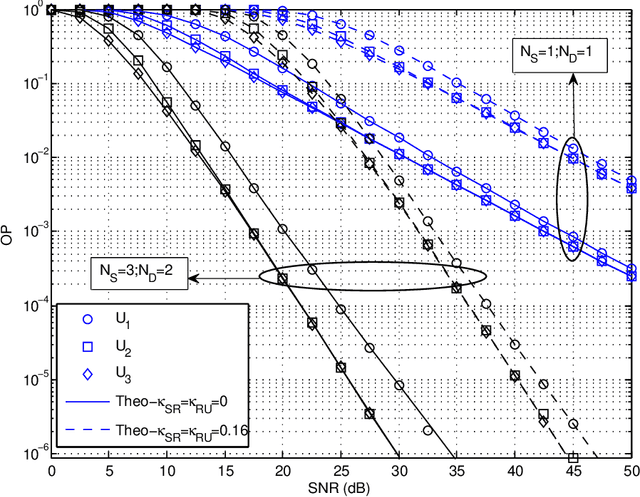Mesut Toka
A Tutorial on Non-Terrestrial Networks: Towards Global and Ubiquitous 6G Connectivity
Dec 21, 2024



Abstract:The International Mobile Telecommunications (IMT)-2030 framework recently adopted by the International Telecommunication Union Radiocommunication Sector (ITU-R) envisions 6G networks to deliver intelligent, seamless connectivity that supports reliable, sustainable, and resilient communications. Recent developments in the 3rd Generation Partnership Project (3GPP) Releases 17-19, particularly within the Radio Access Network (RAN)4 working group addressing satellite and cellular spectrum sharing and RAN2 enhancing New Radio (NR)/IoT for NTN, highlight the critical role NTN is set to play in the evolution of 6G standards. The integration of advanced signal processing, edge and cloud computing, and Deep Reinforcement Learning (DRL) for Low Earth Orbit (LEO) satellites and aerial platforms, such as Uncrewed Aerial Vehicles (UAV) and high-, medium-, and low-altitude platform stations, has revolutionized the convergence of space, aerial, and Terrestrial Networks (TN). Artificial Intelligence (AI)-powered deployments for NTN and NTN-IoT, combined with Next Generation Multiple Access (NGMA) technologies, have dramatically reshaped global connectivity. This tutorial paper provides a comprehensive exploration of emerging NTN-based 6G wireless networks, covering vision, alignment with 5G-Advanced and 6G standards, key principles, trends, challenges, real-world applications, and novel problem solving frameworks. It examines essential enabling technologies like AI for NTN (LEO satellites and aerial platforms), DRL, edge computing for NTN, AI for NTN trajectory optimization, Reconfigurable Intelligent Surfaces (RIS)-enhanced NTN, and robust Multiple-Input-Multiple-Output (MIMO) beamforming. Furthermore, it addresses interference management through NGMA, including Rate-Splitting Multiple Access (RSMA) for NTN, and the use of aerial platforms for access, relay, and fronthaul/backhaul connectivity.
Sum-Rate Maximization of RSMA-based Aerial Communications with Energy Harvesting: A Reinforcement Learning Approach
Jun 22, 2023



Abstract:In this letter, we investigate a joint power and beamforming design problem for rate-splitting multiple access (RSMA)-based aerial communications with energy harvesting, where a self-sustainable aerial base station serves multiple users by utilizing the harvested energy. Considering maximizing the sum-rate from the long-term perspective, we utilize a deep reinforcement learning (DRL) approach, namely the soft actor-critic algorithm, to restrict the maximum transmission power at each time based on the stochastic property of the channel environment, harvested energy, and battery power information. Moreover, for designing precoders and power allocation among all the private/common streams of the RSMA, we employ sequential least squares programming (SLSQP) using the Han-Powell quasi-Newton method to maximize the sum-rate for the given transmission power via DRL. Numerical results show the superiority of the proposed scheme over several baseline methods in terms of the average sum-rate performance.
Indexed Multiple Access with Reconfigurable Intelligent Surfaces: The Reflection Tuning Potential
Feb 15, 2023



Abstract:Indexed modulation (IM) is an evolving technique that has become popular due to its ability of parallel data communication over distinct combinations of transmission entities. In this article, we first provide a comprehensive survey of IM-enabled multiple access (MA) techniques, emphasizing the shortcomings of existing non-indexed MA schemes. Theoretical comparisons are presented to show how the notion of indexing eliminates the limitations of non-indexed solutions. We also discuss the benefits that the utilization of a reconfigurable intelligent surface (RIS) can offer when deployed as an indexing entity. In particular, we propose an RIS-indexed multiple access (RIMA) transmission scheme that utilizes dynamic phase tuning to embed multi-user information over a single carrier. The performance of the proposed RIMA is assessed in light of simulation results that confirm its performance gains. The article further includes a list of relevant open technical issues and research directions.
Performance Analyses of TAS/Alamouti-MRC NOMA in Dual-Hop Full-Duplex AF Relaying Networks
Sep 25, 2021



Abstract:In this paper, the performance of a power domain downlink multiple-input multiple-output non-orthogonal multiple access system in dual-hop full-duplex (FD) relaying networks is investigated over Nakagami-$m$ fading channels by considering the channel estimation error and feedback delay. Particularly, in the investigated system, the base station equipped with multiple antennas transmits information to all mobile users by applying conventional transmit antenna selection/Alamouti-space-time block coding scheme with the help of a dedicated FD amplify-and-forward relay. The received signals at mobile users are combined according to maximal-ratio combining technique to exploit benefits of receive diversity. In order to demonstrate the superiority of the proposed system, outage probability (OP) is investigated and tight lower bound expressions are derived for the obtained OP. Moreover, asymptotic analyses are also conducted for ideal and practical conditions to provide further insights about the outage behavior in the high signal-to-noise ratio region. Finally, theoretical analyses are validated via Monte Carlo simulations and software defined radio based test-bed implementation.
Performance Analyses of MRT/MRC in Dual-Hop NOMA Full-Duplex AF Relay Networks with Residual Hardware Impairments
Feb 16, 2021



Abstract:This paper analyzes the performance of maximum-ratio transmission (MRT)/maximum-ratio combining (MRC) scheme in a dual-hop non-orthogonal multiple access (NOMA) full-duplex (FD) relay networks in the presence of residual hardware impairments (RHIs). The effects of channel estimation errors (CEEs) and imperfect successive interference cancellation are also considered for a realistic performance analysis. In the network, the base station and multiple users utilize MRT and MRC, respectively, while a dedicated relay consisting of two antennas, one for receiving and the other for broadcasting, operates in amplify-and-forward mode. For performance criterion, exact outage probability (OP) expression is derived for Nakagami-m fading channels. Furthermore, a tight lower bound and asymptotic expressions are also derived to provide more insights into the obtained OP in terms of diversity order and array gain. The obtained numerical results demonstrate the importance of loop-interference cancellation process at FD relay in order for the investigated system to perform better than half-duplex-NOMA counterpart. Also, a performance trade-off between the MRT and MRC schemes is observed in the presence of CEEs among users. Furthermore, it is shown that RHIs have a significant effect on the performance of users with lower power coefficients, however it does not change the diversity order. RHIs and CEEs have the most and least deterioration effects on the system performance, respectively.
 Add to Chrome
Add to Chrome Add to Firefox
Add to Firefox Add to Edge
Add to Edge